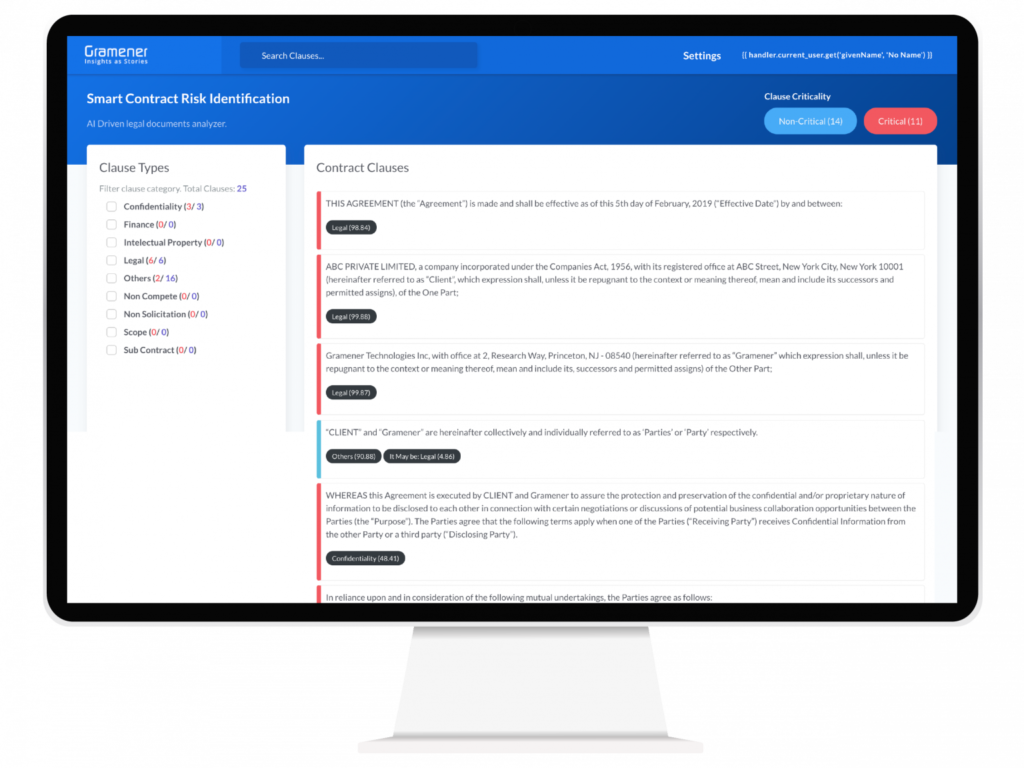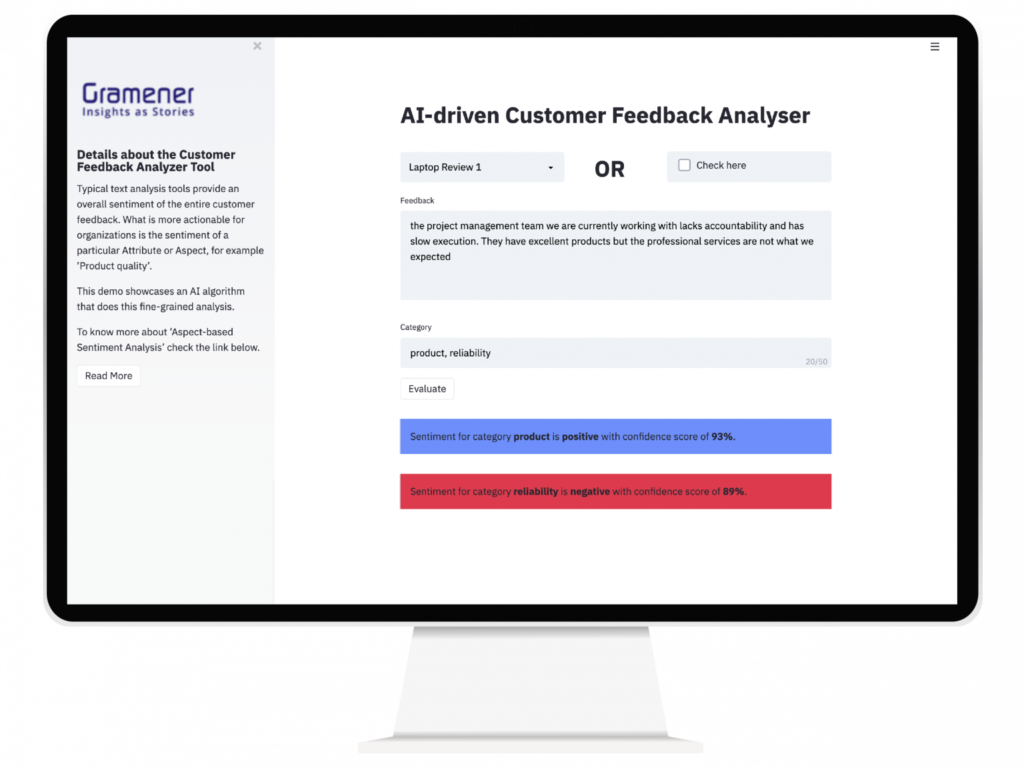Named Entity Recognition (NER) is a popular natural language processing (NLP) technique with wide-ranging benefits. It identifies named entities from texts on auto-pilot mode to classify them into predefined categories. Entities can be the names of people, businesses, cities, values, percentages, etc. The technique is ideal for extracting and understanding textual information. Businesses can also use it to collect data and store it in a database. Let’s look at that in this article.
Table of Contents
What is Named Entity Recognition (NER)?

Named Entity Recognition is a commonly used Natural Language Processing task. NER is the process of identifying and categorizing words, expressions, or names in unstructured data into predefined categories such as persons, organizations, and locations.
It gets classified according to their types or other properties using rules, which take into account their context. The purpose of NER is to detect parts of a text that correspond to certain types of named entities to determine the correct context for each recognized named entity.
Named Entity Recognition is a commonly used Natural Language Processing task. NER is the process of identifying and categorizing words, expressions, or names in unstructured data into predefined categories such as persons, organizations, and locations.
It gets classified according to their types or other properties using rules, which take into account their context. The purpose of NER is to detect parts of a text that correspond to certain types of named entities to determine the correct context for each recognized named entity.
These are hard to identify manually because they are not separated from other words by whitespace characters or punctuation marks. The task thus becomes an information extraction problem.
NER is a sub-task of Named Entity Classification since the latter assigns only one label per text to named entities, whereas named entity recognition gives multiple ones. Named Entities are expressions that identify an entity in a human language. Let’s look at some examples:
- Person: Steve Jobs, Bill Gates, Mark Zuckerberg
- Places: New York, London, Paris
- Businesses: Facebook, Tesla, Amazon
- Money: 200 Million Euros, 100 Thousand Dollars, 10,000 Swiss Franc
- Date: November 30, 2021
How Named Entity Recognition works?
NER models typically involve a two-step process. It includes detecting named entities and categorizing them. The first step includes identifying strings of words that constitute an entity. In a string of words, each word is a token.
For example, let us consider “Gramener is a design-led data science company,” It is a string of seven tokens representing an entity. You can use the inside-outside-beginning tagging system to define where entities start and end. The next step involves the creation of categories related to entities.
We already have some examples above. Places, businesses, money, and dates are all an example of entity categories. To find the perfect match for you, you can also create your categories related to tasks.
Granular rules determine entities belonging to a specific category. It is when there is ambiguity and task-specific ontologies that need customization. One way to make a model more accurate is by training it on data that is relevant. But what constitutes as appropriate, and how do we categorize things?
A good working definition would be the task at hand. If you want the tool to navigate the names of cities, go ahead and do that with the help of the names of all cities worldwide. If you instead train it for names of people, the tool will struggle to give the desired output.
After defining the entities and categories, you can use them to add labels to your data. You can then create a training dataset to train the algorithm for the predictive labeling of text.
Use Cases of Named Entity Recognition
NLP use cases in the Pharma & Healthcare industry are growing due to its ability to provide insights. NERs are a major use case for this field, extracting and identifying various types of text information. Multiple use cases of Named Entity Recognition (NER) help business users from various domains. For example, NER can help lawyers automate legal document reviews. Another example can be for any customer support department to build NER-enabled solutions to improve CX. Let’s find out more use cases of NER in several industries.
NER Categorizes Documents
NER can be a helpful tool for any team working on large document datasets, like news reports or sports articles. When right-sized to the size of your dataset, it may categorize all information appropriately and extract just enough entities so they get classified without wasting time doing this manually.

Gramener’s Smart Contract Risk Identifier (SCRI)
The Smart Contract Risk Identifier is an AI-powered legal document analyzer that assists lawyers in conducting precise legal document reviews. Legal papers may be quite complicated, with hundreds of categories and crucial clauses. A Non–Disclosure Agreement (NDA), for example, might take several hours to manually evaluate.
Our solution automatically categorizes a whole document based on clauses. It enables legal practitioners to swiftly assess the seriousness of a clause and act on the most important ones.
This application saves many valuable hours, allowing professionals such as attorneys to focus on more productive duties.
NER Enhances Customer Support
Companies get several complaints and feedback messages each day from customers. Making sure the right people see them is not an easy task. It can be difficult for the organization, as customers express their thoughts through multiple mediums like social media and email.
With NER, you can recognize relevant entities such as product specifications, departments, branch locations, etc. You can then categorize them accordingly before forwarding information to those responsible for handling these types of situations. It will save time and get things done quickly.

Aspect Based Sentiment Analyzer for Customer Feedback
Our AI-powered Customer Feedback Analyzer employs Aspect Based Sentiment Analysis (ABSA) to assist firms in understanding the sentiment associated with a certain characteristic or aspect. ABSA is a text or speech analytics approach that categorizes data based on particular factors in order to discover the underlying sentiment or mood.
The analyzer, for example, can precisely determine client attitudes regarding the quality of a product. This is an advancement above a general text or speech analysis technology that delves into client preferences and experiences.
NER Assists Biomedical Researchers and Hospitals
Researchers are increasingly turning to biomedical literature for information. With the help of deep learning and effective text mining models, researchers can efficiently extract critical terms in medical reports.
It allows them to identify keywords and their synonyms to get what matters most. Nurses and doctors can make better decisions about the treatment of patients as they work with named entity recognition. The algorithm can determine quantities and types of drugs required for demographics and offer better insights into their condition.
NER Influences Recommendation Systems
To make a better recommendation, the named entity recognition model can extract entities from the past activity of users and compare them with current actions. It gives recommendations based on things that interest users most in the present moment.
NER is ideal for developing algorithms of recommendation systems. They suggest content using historical information about users and current activities as there will always be something new waiting for users that also suits their interests.
Content Classification for Media Agencies with NER
NER has the power to automatically identify people, organizations, and places in articles with a high degree of accuracy. It saves time for trained workers managing content online by categorizing it according to defined hierarchies easily discoverable through search engines like Google. Users spend less time sifting through piles of information, looking for what they need.
Summarizes Resumes
Many tools help HR teams filter relevant profiles from the piles of resumes they receive. One popular entity recognition model tool scans through resumes and extracts information automatically, like qualifications, skills, and years of experience.
It also helps the HR department save time by using an AI algorithm, which identifies keywords present in each document not only that it also makes sure that relevant data gets loaded into their system. HR officers do not get overwhelmed when viewing hundreds or even thousands of resumes.
NER Provides Support to Chatbots
The future of customer support is automation. Today’s businesses increasingly rely on bots to save time, effort, and money by taking care of routine work that would otherwise need human intervention.
It conserves the precious resources of a company that can invest in innovative solutions for their customers, but automated services always have challenges. One major issue is understanding who you are talking to, so make sure your chatbot understands speech recognition.
It should also identify specific information like invoice ids or delivery times from review pipelines without having customer data attached at all points before execution. Bots need to be intelligent and trained with named entity recognition algorithms. They can identify entities from the chat. Extracting information is also possible with these models by retraining them for higher accuracy levels.
NER to Optimize Search Engine Algorithms
One way to find a word in the millions of pages online is by using a NER model as it allows you to look at what is relevant and ignore everything else saving time on computational tasks that would otherwise have got wasted with an inefficient search algorithm.
There will be a comparison of key tags from your queries against each article’s tag set. When we need just one or two more pieces of information about something quickly, it will display within seconds without too many results.
How to Do Named Entity Recognition?
There are several ways to get started with named entity recognition. However, one of the better alternatives is through APIs. You can choose open-source named entity recognition APIs or SaaS named entity recognition APIs.
Open-source APIs are free and offer excellent flexibility. Here are a few options you can consider:
- Natural Language Toolkit (NLTK): The natural language analysis platform offers various libraries you can use for NLP tasks. It comes with its classifier that recognizes named entities. You also get the wrapper to make use of the Stanford NER tagger in Python.
- Stanford Named Entity Recognizer (SNER): Standford University has developed this Java-based tool that is a standard library ideal for entity extraction. You can use it to extract entities like names, locations, organizations, and much more. The API has a Conditional Random Fields (CRF) base and has well-trained models.
Benefits of Using NER
When you read text, it is like looking at an unorganized mass of data. To make sense of these documents requires knowledge about things mentioned in them. You can identify the entities within and use them to your advantage. For example, you might be able to see people mentioned in an email with their names listed next to them or know companies discussed by reading documents.
When you identify entities within documents, it will give you a better understanding of the information within. You can then make good use of that data. The person carrying out the work may have little idea about the information within. When you’re hunting for something in an unknown database, entity extraction can provide a better view.
It reveals who and what the information focuses on. It enables analysts to see all names of people, companies, or brands that appear throughout structured data sets, which they could use as their starting point.
Contact us for custom built low code data and AI solutions for your business challenges and check out unstructured data analytics solutions built for our clients, including Fortune 500 companies. Book a free demo right now.

